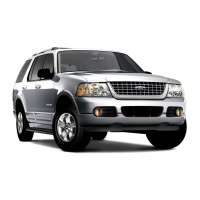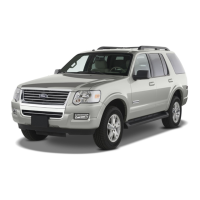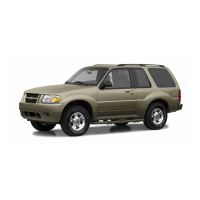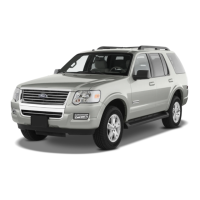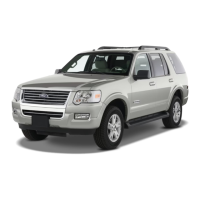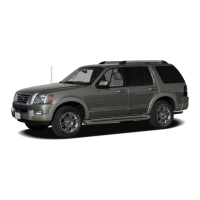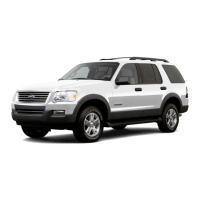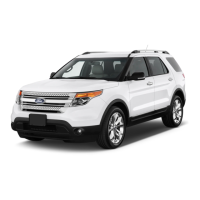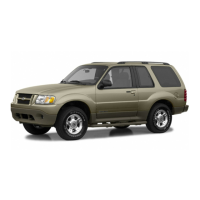HOW DOES FOUR-WHEEL
DRIVE WORK
WARNING: Vehicles with a higher
center of gravity (utility and four-wheel
drive vehicles) handle differently than
vehicles with a lower center of gravity
(passenger cars). Avoid sharp turns,
excessive speed and abrupt steering in
these vehicles. Failure to drive cautiously
increases the risk of losing control of your
vehicle, vehicle rollover, personal injury
and death.
This system is a proactive system. It has
the ability to anticipate wheel slip and
transfer torque to the front wheels before
slip occurs. Even when wheel slip is not
present, the system is continuously
adjusting to the torque distribution, in an
attempt to improve straight line and
cornering behavior, both on and off road.
The system automatically turns on every
time you switch the ignition on.
If any component requires maintenance,
a message appears in the information
display.
The intelligent 4WD system continuously
monitors vehicle conditions and adjusts
the power distribution between the front
and rear wheels. It combines transparent
all-surface operation with highly capable
four-wheel drive.
The 4WD system is always active and
requires no driver input. It is capable of
handling all road conditions including
street and highway driving as well as
off-road and winter driving. You can
optimize more 4WD control by selecting
different drive modes. See What Is Drive
Mode Control (page 281).
Note: A warning message displays in the
instrument cluster display when a 4WD
system fault is present. See Four-Wheel
Drive – Information Messages (page 216).
A 4WD system fault causes the 4WD
system to default to rear-wheel drive only
mode. When this warning message is
displayed, have your vehicle serviced at an
authorized dealer.
Note: A warning message displays in the
instrument cluster display if the 4WD
system overheats. See Four-Wheel Drive
– Warning Lamps (page 216). This
condition could occur if the vehicle is
operated in extreme conditions with
excessive wheel slip, such as deep sand. To
resume normal 4WD function as soon as
possible, stop the vehicle in a safe location
and stop the engine for at least 10 minutes.
After the engine is restarted and the 4WD
system is adequately cooled, the warning
message turns off and normal 4WD function
returns.
FOUR-WHEEL DRIVE
LIMITATIONS
Using different size tires other than the
provided spare could cause system
damage or disable the 4WD drive system.
Operating Four-Wheel Drive (4WD)
Vehicles With Spare Tires
Do not use a different size spare tire other
than the tire provided. If the mini-spare tire
is installed, the 4WD system will disable
and enter rear-wheel drive only mode to
protect driveline components. Some
limited 4WD traction could be provided if
the mini-spare is installed on one of the
front wheels. If you are in driving conditions
where limited 4WD traction is needed
while the mini-spare is installed, it is
recommended the mini-spare be installed
on the front axle. See Four-Wheel Drive
– Information Messages (page 216).
214
Explorer (CTW) Canada/Mexico/United States of America, enUSA, Edition date: 202401, DOM
Four-Wheel Drive

